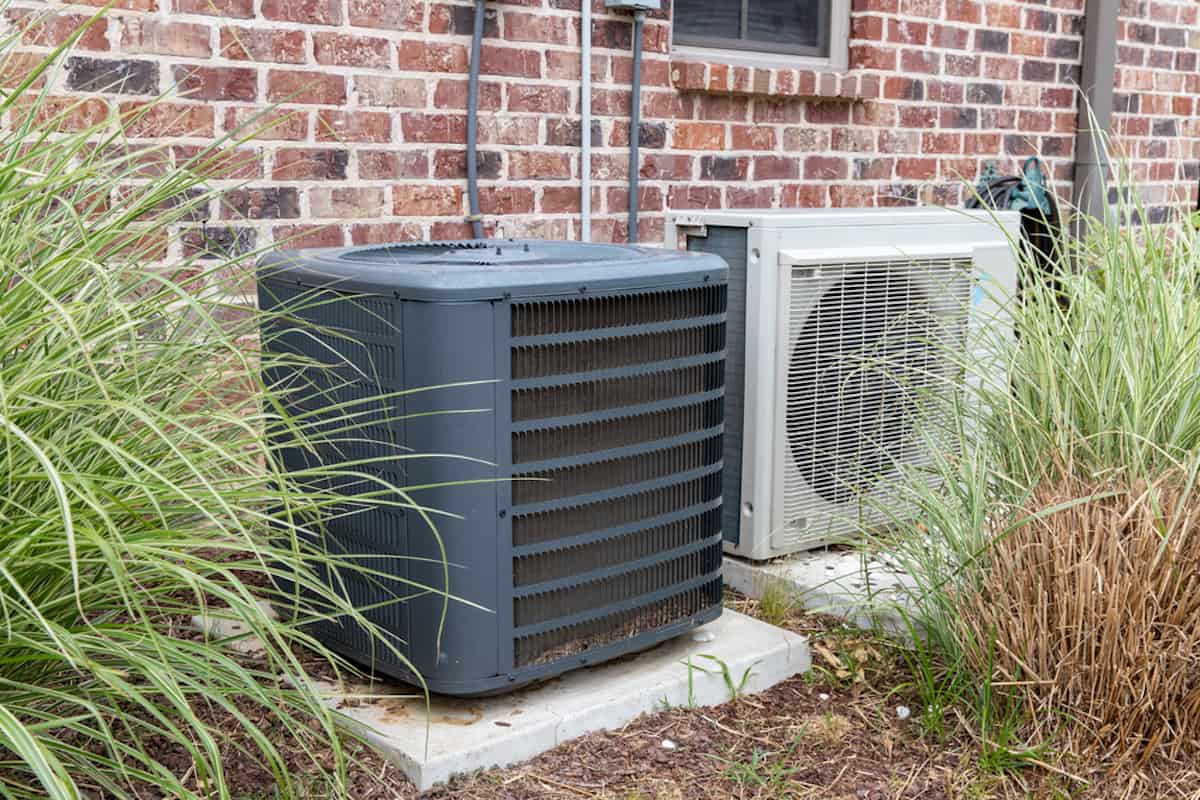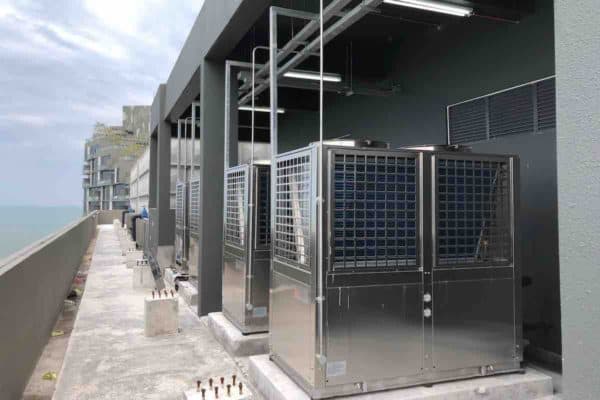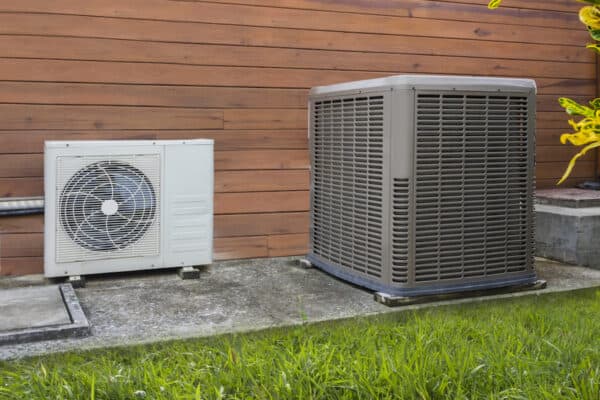What Does a Heat Pump Look Like? (with Photos)
More and more homeowners are interested in getting a heat pump. A heat pump is said to be more efficient at providing heating as well as cooling. If you don’t know anything about heat pumps, you might wonder what does a heat pump look like?
Generally, there are two kinds of heat pumps. A traditional split system heat pump looks like a square cage that is typically grey/black in color. Meanwhile, a mini split heat pump looks like a rectangular box with a round net on the front that is usually white/beige in color.
When your friends and neighbors tell you they have a heat pump, you may find it difficult to pinpoint where is the heat pump since there are many different types of heat pumps and they all look different. So, let me show you what a heat pump looks like.
What Does a Heat Pump Look Like?
As mentioned earlier, there are two kinds of heat pumps. So, let’s start with the more familiar type of heat pump which is the traditional split system heat pump and then followed by the trendy mini split heat pump.
1. Traditional Split System Heat Pump
A traditional split system heat pump looks exactly like most central air conditioning systems in operation now. Generally, you have an air handler (or gas furnace) inside the house and a condensing unit outside the house.
Below is a photo of a traditional split system condensing unit:
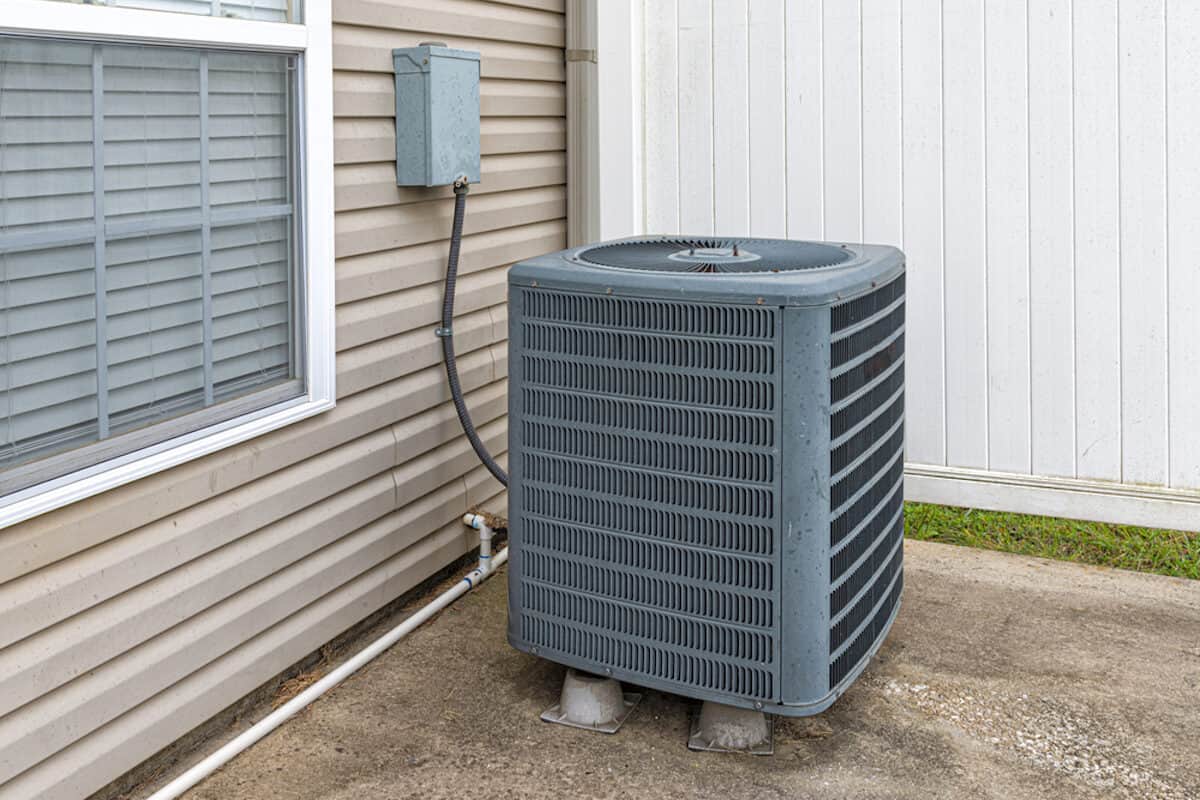
Since there is an indoor unit (air handler) and an outdoor unit, the system is known as the split system.
In the United States, most houses are equipped with a split system. The gas furnace is used for heating and the condensing unit is used for air conditioning (or cooling).
As you might have seen already, the condensing unit of the split system also looks like a square cage. It is usually placed on the floor outside the house. It has a fan on the top and it is generally noisy.
A traditional split system condensing unit is only able to provide cooling. But, if the condensing unit is able to provide both heating and cooling, it is known as a heat pump.
Physically, a traditional split system heat pump looks exactly the same as a traditional split air conditioner condensing unit. They both are square in shape with a fan on top.
Below is a comparison of a traditional split air conditioner condensing unit and a traditional split heat pump, see if you can spot any differences:

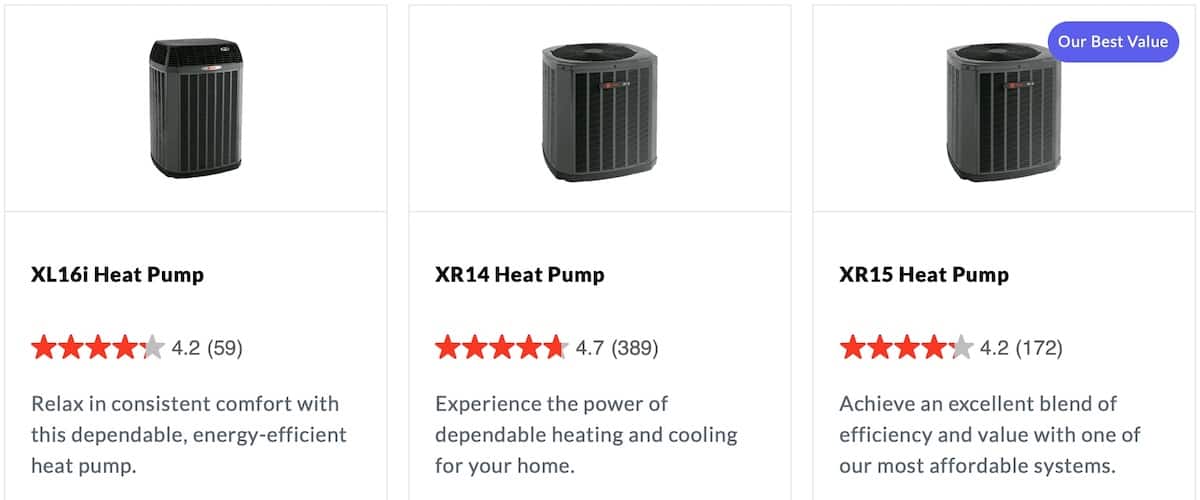
In short, the outside unit of a traditional split system heat pump looks the same as the condensing unit of a traditional split air conditioning system.
However, inside the house, a traditional split system heat pump doesn’t need a gas furnace since it is able to provide heating. But, in cold places, a gas furnace may still present as a heat pump alone may not be able to provide sufficient heating.
Nonetheless, you can’t really differentiate a heat pump from an air conditioner by just looking at the outdoor unit. But, if you find the air handler doesn’t burn gas and still provides heating, chances are it is paired with a heat pump.
2. Ductless Mini Split Heat Pump
So far, the photos I’ve shown are traditional split system heat pumps where the heating/cooling capacity usually starts from 2 tons (24,000 BTU) up to 5 tons (60,000 BTU).
There is another type of heat pump which is the ductless mini split heat pump where the heating/cooling capacity is mostly below 2 tons (24,000 BTU).
A ductless mini split heat pump also has an indoor unit and an outdoor unit but it looks very different from a traditional split system heat pump.
First, the outdoor unit of a ductless mini split heat pump is much smaller than a traditional split system heat pump. On top of that, it discharges hot/cold air from the side instead of from the top.
Below is a photo of the outdoor unit of a ductless mini split heat pump:

The outdoor unit of most ductless mini split heat pumps is white/beige in color. Depending on the manufacturer, some may be painted in dark/black color.
In addition, most of them sit on a wall bracket hanging on the exterior wall of the house. Still, many are installed on the floor with a floor bracket as well.
Large-capacity ductless mini split heat pumps have an outdoor unit that has two fans instead of one. Nevertheless, they still discharge hot/cold air from the side.
Similar to a traditional split system heat pump, a ductless mini split heat pump also has its counterpart which is a ductless mini split air conditioner and both look exactly the same as well.
Inside the house, a ductless mini split heat pump typically has a ductless wall mounted unit that hung directly on the wall. However, it is not always the case.
A ductless mini split heat pump can pair with several different types of indoor units. These indoor units look very different from each other and they are known as:
- Wall-mounted unit
- Ceiling cassette unit
- Floor-mounted unit
- Ceiling ducted unit
- Ceiling suspended unit
While the indoor unit is different, the outdoor unit of a ductless mini split heat pump is the same. For more details on the indoor unit type, see my post 5 Types of Mini Split Indoor Units (How to Choose).
However, there are two types of ductless mini split heat pumps; a) single-zone and b) multi-zone.
In general, a single-zone mini split heat pump has a single-fan outdoor unit and a multi-zone mini split heat pump has a dual-fan outdoor unit.
Regardless, both single-zone and multi-zone mini split heat pumps share the same kind of indoor unit.
Moreover, ductless mini split heat pumps are far more popular than ductless mini split air conditioners. So, if you see one like the above photo, chances are it is a heat pump.
On top of the outdoor unit, if you see one of the following indoor units in a house, chances are the house has a ductless mini split heat pump:

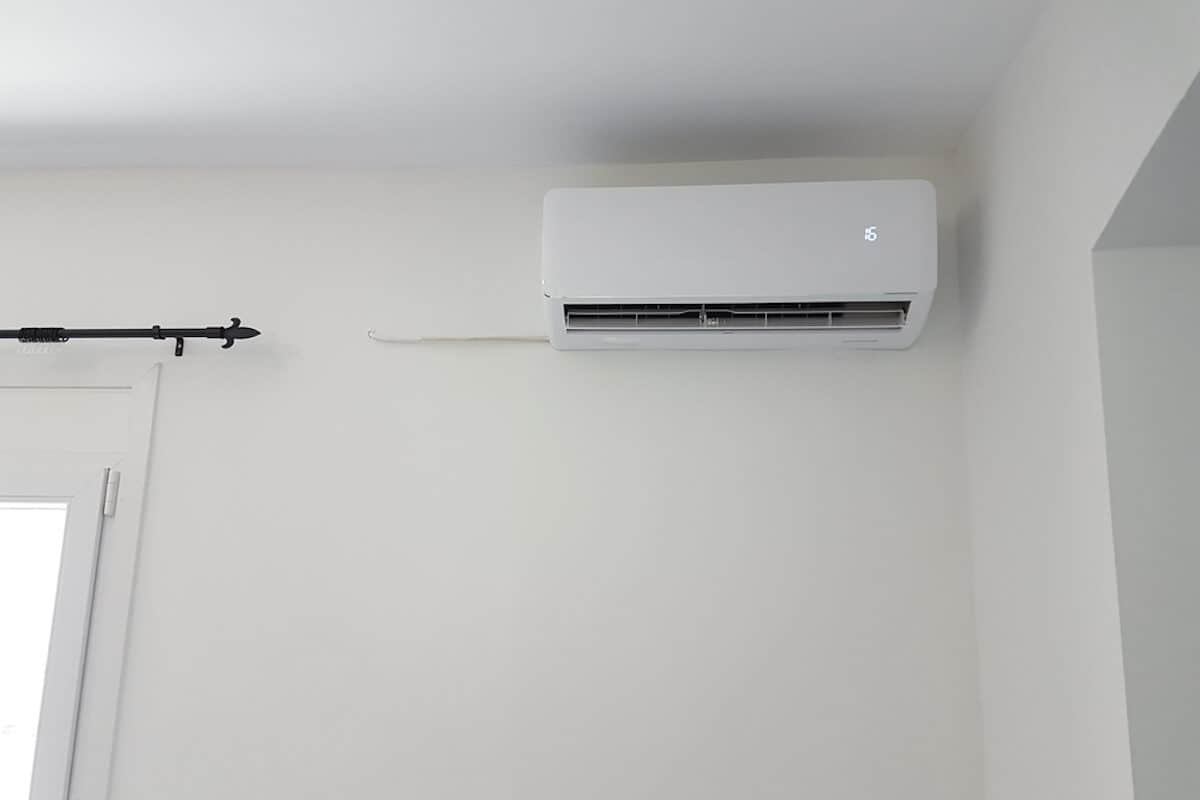


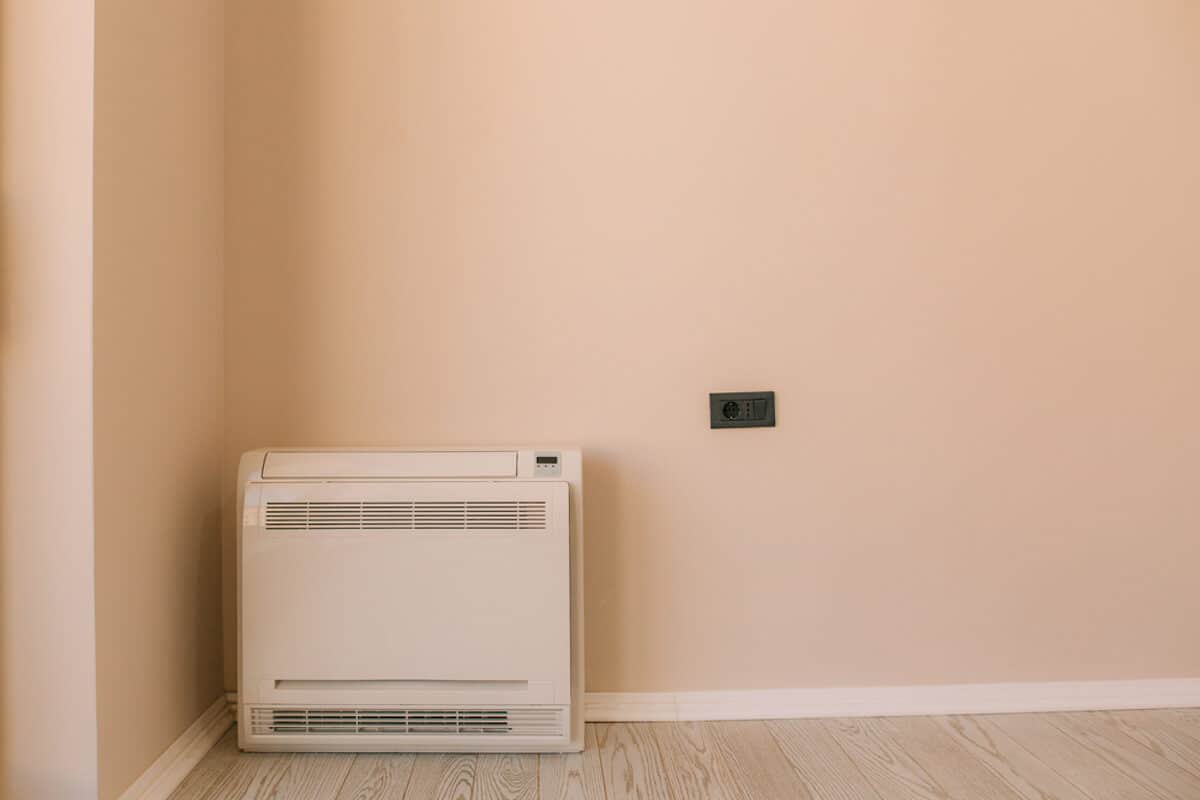
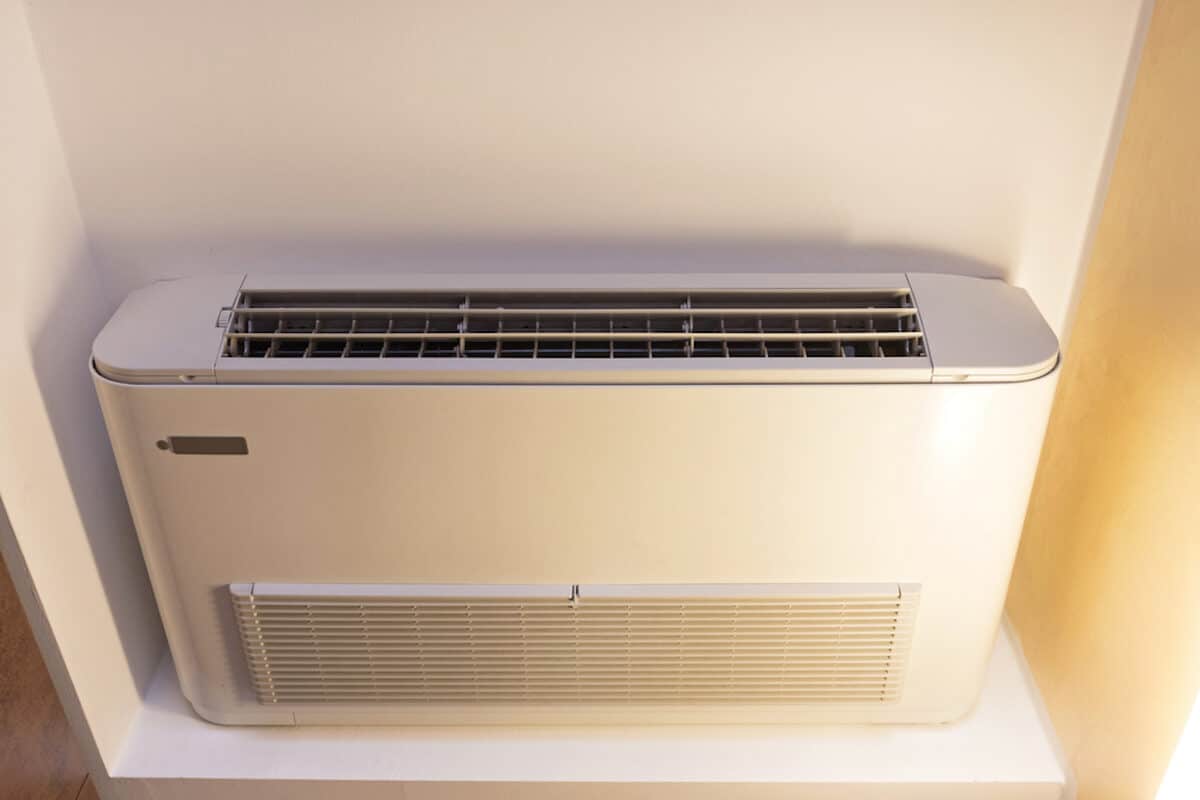
Last but not least, a ductless mini split heat pump doesn’t always have to be ductless. In fact, it can be ducted when paired with a ceiling ducted indoor unit.
If it is a ducted unit, you can’t tell if it is a mini split heat pump or a gas furnace since they both are concealed above the ceiling. So, you need to look at the outdoor unit to identify if it is a mini split heat pump or a traditional split system heat pump.
To explore more about ducted mini splits, see my post Ducted Mini Split Guide: Basics, Comparison & Installation.
Where is the Heat Pump Located in a Home?
A home may use a heat pump system that is concealed. For example, it may use a centralized air handler and ductwork to distribute hot/cold air. So, how do you check if the home has a heat pump?
First, locate the condensing unit outside the house. Usually, it is placed either on the side or at the back of the house. If it is a traditional split system, you should spot it pretty quickly. Otherwise, turn on the HVAC system and find the outdoor unit using the noise.
Second, raise your head and look around the exterior wall of the house. If the house is using a ductless mini split heat pump, it may be hung up high on the wall. If you find several outdoor units, the house is probably using single-zone mini split heat pumps.
Sometimes, the heat pump may be located on the roof, especially if the house has a flat roof. So, be sure to check there if you can’t find it elsewhere.
In the event that there is no outdoor unit to be found for whatever reason, you can locate the air handler which is usually installed in the attic or the basement. Sometimes, it may be located in the laundry room or any other room that is barely occupied.
When you finally found the air handler, check if it is a gas furnace. If it doesn’t burn gas and the house needs or has heating, chances are the air handler is previously connected to a heat pump.
If the house doesn’t have an air handler, look around the bedroom, living room and dining room and see if you can find any indoor units that a mini split heat pump is paired with.
How to Tell If You have a Heat Pump?
Sometimes, it can be difficult to identify if an HVAC unit is a heat pump or just an air conditioner. Other than the outer appearance, you can identify if it is a heat pump by checking a few things as I outlined in the following.
a) Unit Name/Description
Obviously, if a unit is called a heat pump, it is a heat pump. It is just that it might be in a different form like I said, there are different types of heat pumps.
Usually, manufacturers name their HVAC products as heat pumps when they can do both heating and cooling. If it is cooling only, manufacturers name them as air conditioners. For example, the TRANE split system that I’ve shown earlier.
b) Nameplate
If you have an existing HVAC unit and you’re not sure whether it is a heat pump or an air conditioner, you can look at the nameplate of the outdoor unit.
Below is a sample of the nameplate published by howtolookatahouse.com:

If you take a closer look at number 8, it says heat pump. If you can’t find anything there, check if the nameplate stated any heating capacity. An HVAC unit that has a heating capacity is a heat pump and not just an air conditioner.
c) Specifications
If you can’t identify it from the nameplate, search the internet with the model number stated on the nameplate and see if anything shows up. If you found a specification that has a heating capacity or HSPF which is the heating efficiency, you can confirm that it is a heat pump.
Below illustrates how you can identify a heat pump by looking at the specifications:
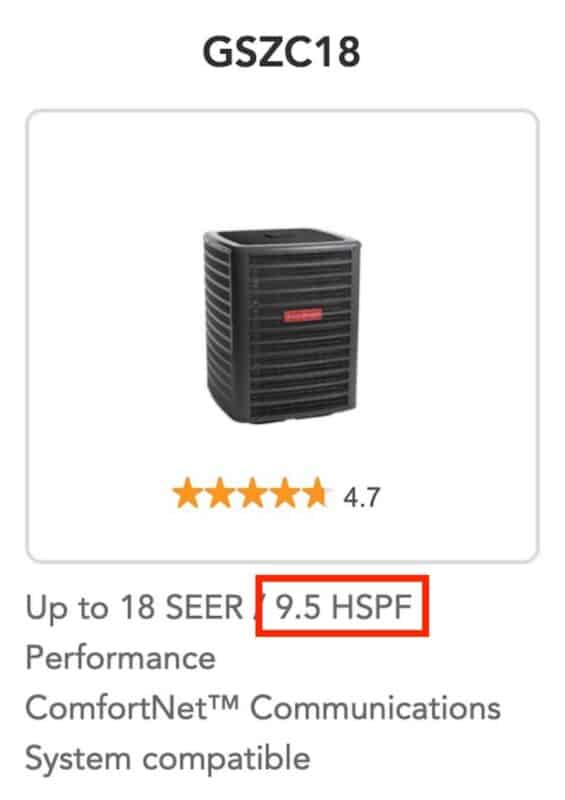
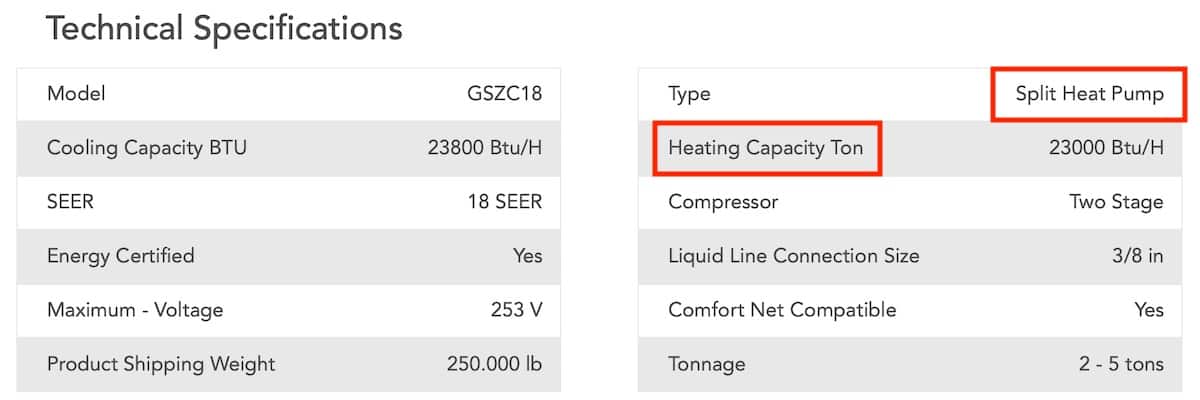
A heat pump is a heat pump because it provides heating. If your HVAC unit doesn’t have any heating capacity or HSPF, you are certain that it is not a heat pump but an air conditioner.
d) Heat Mode
In case the nameplate is blurred or worn such that you can’t identify whether the HVAC unit is a heat pump or an air conditioner, go inside the house and turn on the HVAC unit.
Check if the wired controller or thermostat or remote controller has a heat mode. When the HVAC unit is operating in heating mode, you should feel the hot air coming out of the indoor unit or grilles.
Take note that a faulty air conditioner may supply warm air but definitely not the one that you would define as hot air.
Below is a photo showing the heat mode on a thermostat published by energyvanguard.com:
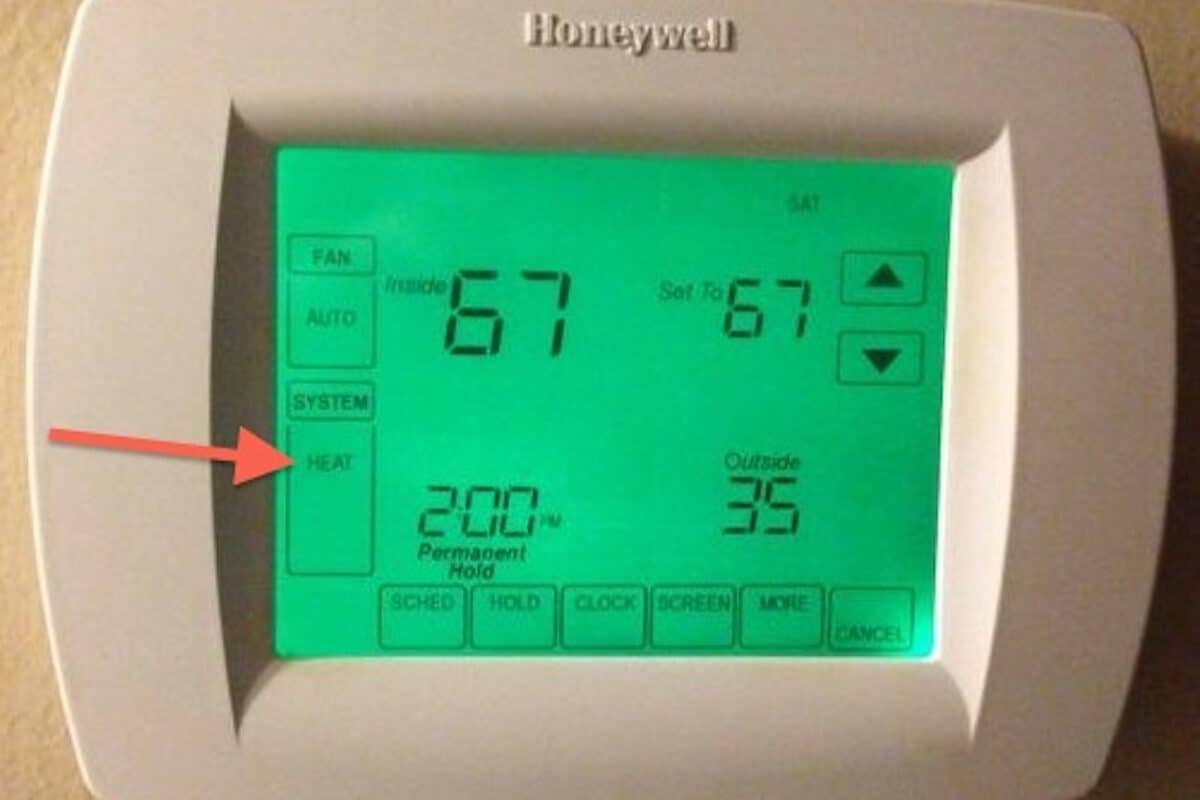
An HVAC unit that supports both heating and cooling on a single controller is most likely a heat pump. If you can’t seem to find any heat mode button, the HVAC unit is probably an air conditioner that does cooling only.
e) Reversing Valve
If all the above still can’t help you to identify a heat pump, you would need to open up the outdoor unit casing and check if there is a reversing valve.
The reason why a heat pump can do both heating and cooling is that it has a reversing valve that can reverse the cooling process and turns it into a heating process.
Below is a sample photo of a reversing valve inside a heat pump published by energyvanguard.com:
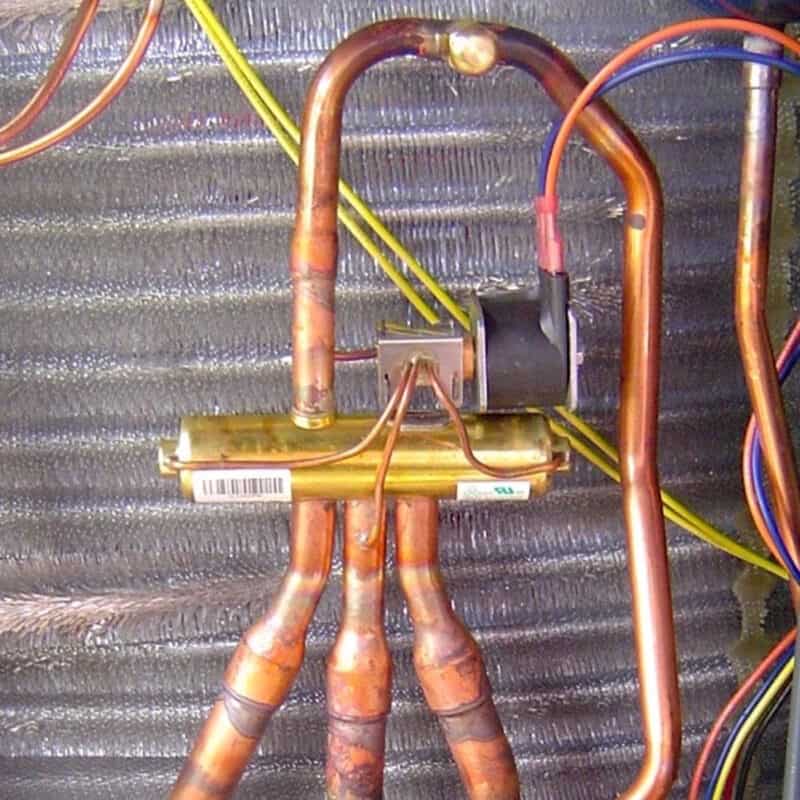
Your reversing valve may not look exactly like the above photo but if has a header with a few copper tubes attached to it, chances are it is a reversing valve and the HVAC unit is a heat pump.
Conclusion
Sometimes, by just looking at the outer appearance, we may confuse an air conditioner with a heat pump since they both look exactly the same. Hence, we should always check the nameplate and model and look for the heating capacity as well as HSPF to confirm if the HVAC unit is indeed a heat pump.
Nonetheless, there are other kinds of heat pumps such as water source heat pumps, ground source heat pumps and air source heat pumps for hot water. These heat pumps may look slightly different but their core function remains the same which is to provide heating.
Lastly, consider my Mini Split (eBook) if you want to know how can you use Mini Split in your house. If you still have doubt or not feeling confident enough, feel free to consult me.
Consultation Service
Ask me for HVAC advice such as brand selection, best model, benefits, features, placement, duct size, grille size, how to design, design check, verification and other HVAC related queries.
If you have anything to add (or ask) about this topic, leave a comment down below!


